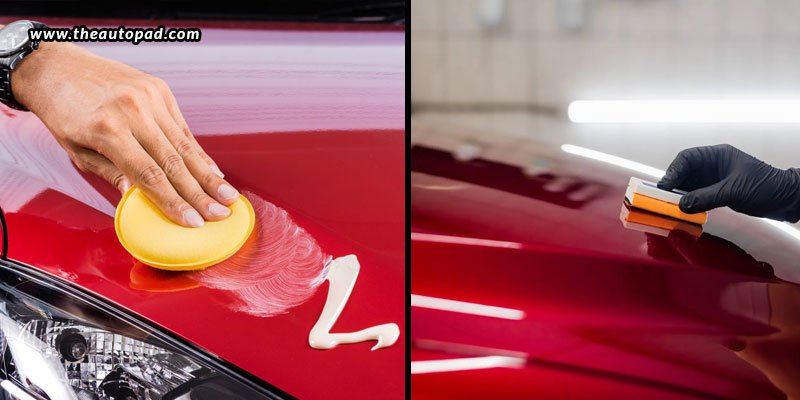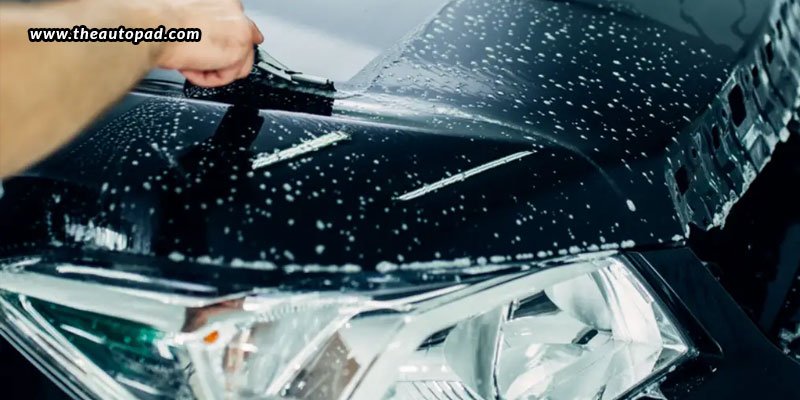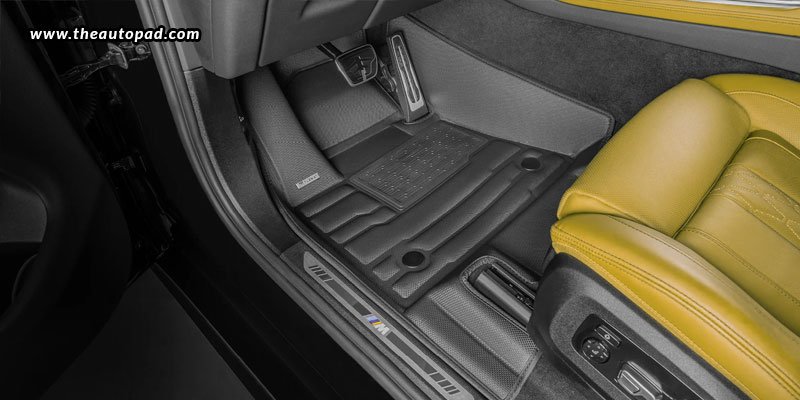Ceramic coatings and traditional waxes are two of the most widely used products for protecting the paint on cars. While both provide a layer of defence, increase lustre, and improve the look of the car, they vary significantly in terms of cost, long-term advantages, durability, and ease of use. To assist you in choosing what’s best for your car, this blog compares traditional waxes and ceramic coatings in every possible aspect.
Traditional waxing
Traditional wax, which offers a mixture of synthetic polymers and natural waxes to form a protective layer on a car’s paint, has long been a mainstay for auto enthusiasts. This layer adds a glossy sheen and evens out minor imperfections.
- Durability: Traditional waxes offer good protection in the short term, but they degrade easily in the presence of UV light, rain, and washing. For this reason, wax needs to be reapplied every few months in order to maintain its cosmetic and protective qualities. It usually lasts for a few weeks to three months, as it is quickly removed with detergents or exposure to the outdoors, and thus needs to be reapplied frequently.
- Cost: The cost of traditional waxes is not so high. However, the long-term expenses can mount up because they require frequent reapplication. At first cheap, the expenses mount up, but the procedure is simple and within the reach of most DIYers.
- Ease of use: For most automobile owners, applying traditional wax is easy. The procedure includes cleaning the vehicle, buffing it to provide a glossy appearance, then applying the wax—either by hand or with a machine. It can take a lot of time, even though many vehicle aficionados find it pleasurable. For a basic application, it doesn’t require any special expertise and can be applied quickly with minimal tools, taking between thirty and sixty minutes on average.
- Protection: While traditional wax gives surfaces a lovely sheen and offers some protection against environmental dangers, it falls short in other respects. It provides a basic level of defence against water, light scrapes, and UV radiation, but its effectiveness fades quickly. Its effectiveness wanes after a few washes or rainstorms, and it does not prevent oxidation or long-term paint damage. However, it does assist shield against UV rays and water.
Ceramic coating
Ceramic coatings are made mostly of silicon dioxide (SiO₂) and are considered to be advanced liquid polymer solutions. These coatings create a semi-permanent, hydrophobic layer on the paint of an automobile by forming a chemical link with the surface.
- Durability: Ceramic coatings provide long-term protection that often requires little maintenance over a period of one to five years. After application, the coating creates a semi-permanent connection with the paint that is unbreakable and needs only occasional washing to stay effective.
- Cost: Compared to traditional wax, ceramic coatings require a larger initial expenditure. A large amount might be spent on professional applications, depending on the vehicle and coating quality. However, the long-term savings are noteworthy because there is no longer a need for periodic reapplication, even with the greater upfront cost. Although there are DIY kits available, applying them correctly might be difficult.
- Ease of use: Applying ceramic coatings requires greater skill and careful planning. Before applying the coating, the car’s surface needs to be carefully cleaned and decontaminated. Any scratches or flaws should also be fixed because the coating will seal them in. It is recommended that ceramic coatings be applied by experts in a controlled setting for optimal outcomes. The procedure may take a few hours or perhaps several days to be completed.
- Protection: Compared to wax, ceramic coatings create a strong and durable barrier that offers better defence against oxidation, chemicals, and UV radiation. Their ability to repel water spots and make cleaning easier is facilitated by their hydrophobic qualities, which guarantee long-lasting protection that holds up even after multiple washes.
Which one is right for you?
Car owners who love routinely polishing their vehicles, those looking for a cost-effective, temporary way to improve shine, and do-it-yourself enthusiasts who would rather take care of their cars without professional assistance are the most suitable candidates for traditional wax. On the other hand, people who want low maintenance and long-term protection, those who are prepared to pay for expert services to get the best results, and those who live in harsh environments where their cars are subjected to chemicals, UV rays, and harsh weather are the perfect candidates for ceramic coating.
In conclusion, both traditional waxes and ceramic coatings have their role in car maintenance, albeit for different reasons. For those who are willing to devote time to regular reapplication, waxes provide a lovely, reasonably priced sheen. On the other hand, protecting your car with ceramic coatings offers visually appealing and long-lasting protection, which makes them the perfect choice for low-maintenance paint preservation. Think about your preferred length of protection, preferred level of upkeep, and your budget when deciding between the two. For individuals looking for professional ceramic coating services, Autopad provides excellent options to guarantee a perfect finish. All you have to do is search “ceramic coating near me” to locate expert application services and premium solutions for car detailing in Bangalore.




